https://technastic.com/remove-items-context-menu-windows-10/
While the right-click context menu on Windows 10 is very handy as it lets us access the quick actions contextually. Some programs add more items to the context menu and make it cluttered. Fortunately, it’s easy to remove or add a program and edit the right-click context menu on Windows 10 via the Registry editor and context menu customizer programs like Nirsoft ShellMenuView, Easy Context Menu, Context Menu Tuner, and CCleaner. All operating systems support the context menu feature as it’s an essential tool that offers relevant options based on file types and programs. The longer the context menu is, the more time-taking and confusing it becomes. Therefore it’s a good idea to clean the Windows context menu for a better experience. As you can see below, the context menu for a folder with images on my PC has 28 items most of which (the highlighted ones) I probably never use.
Playvolume00:30/00:58TRUVID VIDEO GAME 2023TruvidfullScreen
[color=var(--nv-primary-accent)]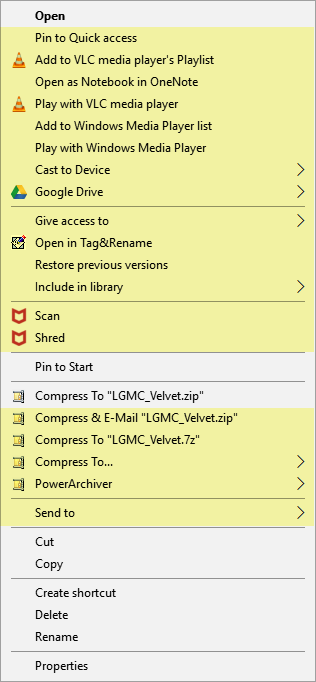
While I feel like getting rid of useless shortcuts, there are some missing items I would like to add to it. In this tutorial, we’ll see how we can edit and add a program to the right-click context menu on Windows 7, 8, and 10. I remember using tools like Ultimate Windows Context Menu Customizer and Windows Context Menu Manager years ago but these programs and no more available. In this Article [color=var(--nv-primary-accent)]hide
[color=var(--nv-primary-accent)]1. Removing Context Menu Items via Registry Editor[color=var(--nv-primary-accent)]1.1. Find the Context Menu Item key
[color=var(--nv-primary-accent)]1.2. Remove ‘Shell’ Items from the Context Menu
[color=var(--nv-primary-accent)]1.3. Remove ‘Shellex’ Items from the Right-click Menu
[color=var(--nv-primary-accent)]2. Windows Context Menu Editors[color=var(--nv-primary-accent)]2.1. Easy Context Menu
[color=var(--nv-primary-accent)]2.2. Nirsoft Context Menu Editor[color=var(--nv-primary-accent)]2.2.1. ShellMenuView
[color=var(--nv-primary-accent)]2.2.2. ShellExView
[color=var(--nv-primary-accent)]2.3. Context Menu Tuner
[color=var(--nv-primary-accent)]2.4. Some More Context Menu Customizers
Removing Context Menu Items via Registry EditorIt’s very easy to edit the right-click context menu on Windows 10 using a program. However, if you don’t want to install a third-party app, you can easily remove unwanted items from the Windows context menu by editing the Registry. Windows Registry Editor is a powerful tool that can add do a lot of things such as: Besides being powerful, Regedit is also a very sensitive thing, and therefore, it needs to be used carefully. To avoid any troubles, it’s advisable that you [color=var(--nv-primary-accent)]create a system restore point or [color=var(--nv-primary-accent)]backup your PC. Find the Context Menu Item key- Click on the Search icon on the Taskbar and type ‘regedit‘ or ‘registry editor‘ and launch it.[color=var(--nv-primary-accent)]
 - Please note that all items present in the context menu of your Windows PC are not found in the same location in the Registry Editor. You’ll have to explore the different subfolders and files inside the HKEY_CLASSES_ROOT directory.[color=var(--nv-primary-accent)]
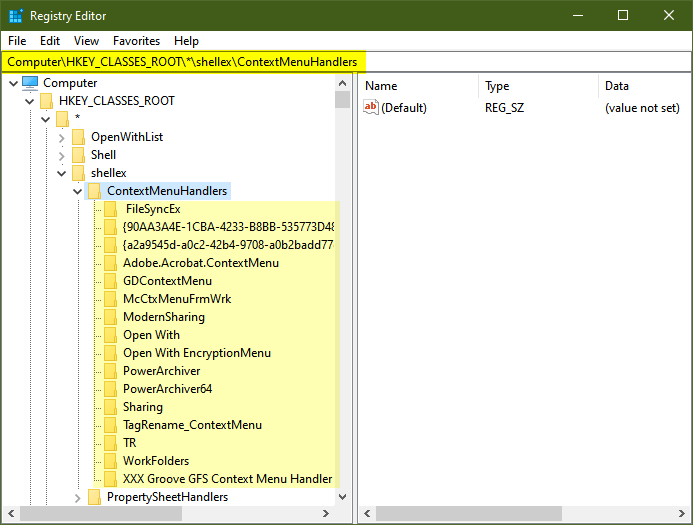
While you can find many of the context menu items in the ContextMenuHandlers directory, you need to look for others on the following paths in the Registry Editor. You can either navigate to the keys mentioned below or just copy and paste them into the address bar. HKEY_CLASSES_ROOT\*\shellex\ContextMenuHandlersHKEY_CLASSES_ROOT\*\shellHKEY_CLASSES_ROOT\AllFileSystemObjects\ShellExTo find the folder-related context menu items in the following locations:
HKEY_CLASSES_ROOT\Directory\shellHKEY_CLASSES_ROOT\Directory\shellex\ContextMenuHandlersRemove ‘Shell’ Items from the Context MenuOnce you have found the desired key for the context menu item you want to remove, you can either delete it or edit it. Please note that if you delete the folder that contains the key, you won’t be able to restore that context menu item. That’s why you should back up the item/s before deleting it. There’re 3 methods to get rid of any unwanted context menu item by removing a Shell item using the Registry Editor. - Delete the context menu item key.
- Add the ‘LegacyDisable‘ string value.
- Create the ‘Extended‘ string value.
You can remove a right-click context menu item on Windows by adding a new string value file called LegacyDisable as well. For instance, if you use the VLC media player and want to remove ‘[color=var(--nv-primary-accent)]Add to VLC media player’s Playlist‘ from the right-click menu, navigate to AddtoPlaylistVLC or paste the following path in the Registry Editor’s address bar: HKEY_CLASSES_ROOT\Directory\shell\AddtoPlaylistVLCSelect AddToPlaylistVLC in the left pane of the window. Now, perform a right-click in the right pane and select New > String Value. [color=var(--nv-primary-accent)]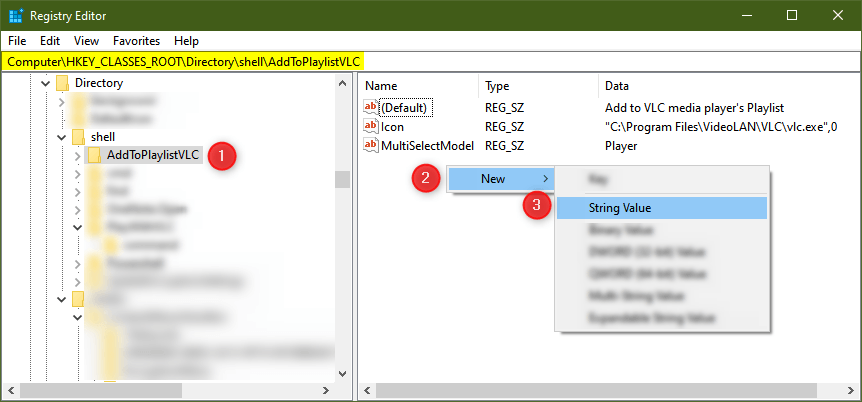
Rename ‘New Value #1‘ to ‘LegacyDisable‘. [color=var(--nv-primary-accent)] That’s it! You have successfully removed ‘Add to VLC media player’s Playlist‘ option from the context menu. You can try this method to delete other items from the context menu as well. Should you ever feel the urge to restore the removed item, just delete the ‘LegacyDisable’ file. Finally, here is my favorite way. If there is a context menu shortcut that you don’t use very often, you can remove it from your right-click context menu while still use it. This method works very much like the Shift + Right-click shortcut used to [color=var(--nv-primary-accent)]make the Copy as path option appear in the context menu. Suppose you want to remove the ‘Add to VLC media player’s Playlist‘ (or any other) shortcut from your context menu and want it to be available at your behest, here’s what you need to do. Go to AddtoPlaylistVLC, create a new string value ( New > String Value) and rename ‘New Value #1‘ to ‘Extended‘. [color=var(--nv-primary-accent)] Now, you’ll see the ‘Add to VLC media player’s Playlist‘ item in the context menu of your PC only when you press the Shift + Right-click buttons. Remove ‘Shellex’ Items from the Right-click MenuThe method to remove a Shellex item from the right-click context menu on Windows is a bit different. Below is an example showing how I removed the Google Drive sync shortcut from the right-click context menu via Shellex. - Navigate to shellex > ContextMenuHandlers in the Registry Editor and select GDContextMenu. Alternatively, you can paste the following path into the address bar.HKEY_CLASSES_ROOT\Directory\shellex\ContextMenuHandlers\GDContextMenu
- Right-click on the (Default) file and select the Modify… option.[color=var(--nv-primary-accent)]
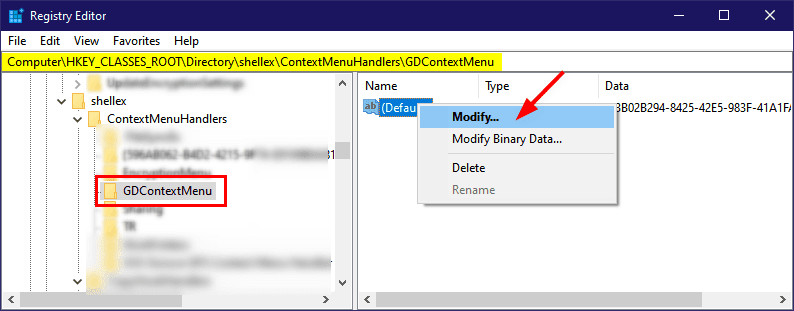 - Now, click in the Value data box and add a dash or minus (–) or any sign before it. The value data is should look like ‘–{BB02B294-8425-42E5-983F-41A1FA970CD6}‘.[color=var(--nv-primary-accent)]
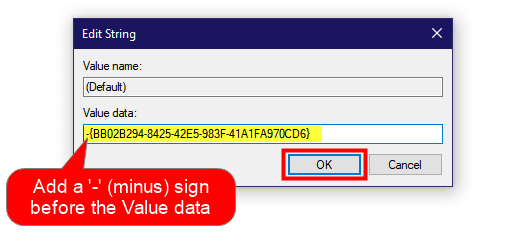 - Click on the OK button to save the changes.
That’s it! The Google Drive file sync shortcut should have disappeared from the right-click context menu on your Windows PC. You can revert the changes anytime later by removing the minus sign you added. Windows Context Menu EditorsIf you find the Registry Editor methods described above too geeky or complicated, there are some programs that can remove or add a program to the right-click menu 0n Windows 10 and older. I tested several context menu customizers that can easily add or remove any item for you. Easy Context MenuEasy Context Menu is probably the most user-friendly program to customize the Windows 10 context menu. It lets you customize the right-click context menu for Desktop, My Computer, Tools, System Tools, Drives, Folders, Files, EXE, Power options, and more. Easy Context Menu is compatible with the 34-bit and 64-bit versions of Windows 10, Windows 8.1, Windows 8, Windows 7, Windows Vista, and Windows XP. You can [color=var(--nv-primary-accent)]download this portable tool from the official website. If you want to add new items to your context menu, launch Easy Context Menu. Select the items you wish to add to the context menu and then, click the Mouse icon with a Plus (+) sign to save the changes. As you can see below, I created a new System Tools context menu item that contains several options. [color=var(--nv-primary-accent)]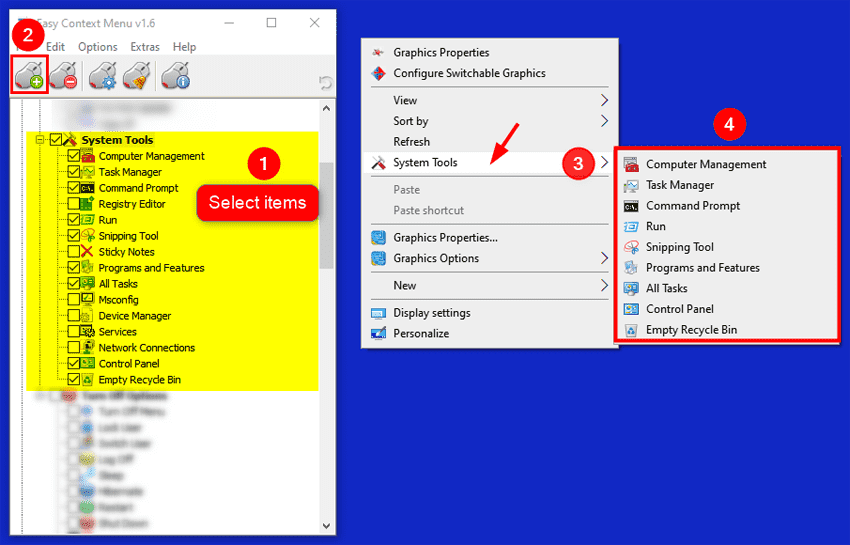 [size=0.8em]Add Items using Easy Context Menu
Easy Context Menu gives you the exact name for the context menu shortcuts. It’s really a great thing as you know which item are you going to remove without any confusion. Click on the ContextMenu Cleaner icon after launching Easy Context Menu. [color=var(--nv-primary-accent)] When the ContextMenu Cleaner window pops up, select the items you want to remove and click the Refresh button on the right pane. [color=var(--nv-primary-accent)]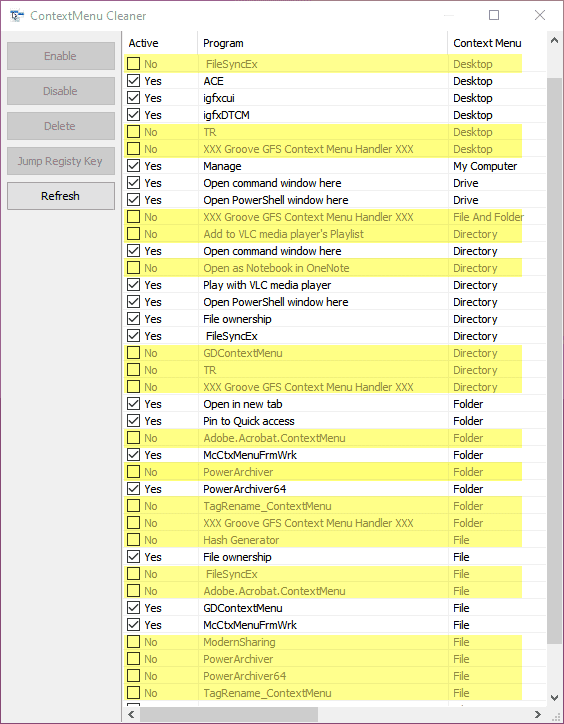 Nirsoft Context Menu Editor[color=var(--nv-primary-accent)]ShellMenuView and [color=var(--nv-primary-accent)]ShellExView from Nirsoft are nifty tools to edit the context menu on Windows. While the first utility handles shell items, the second one takes care of the shellex items. ShellMenuViewExtract the shmnview.zip and double-click shmnview.exe to launch the program. Now, select the context menu item you want to remove or add. Click the Disable or Red light button to remove and the Enable or Greenlight button to add an item. Alternatively, you can right-click after selecting the items and choose Enable/Disable Selected items option. [color=var(--nv-primary-accent)]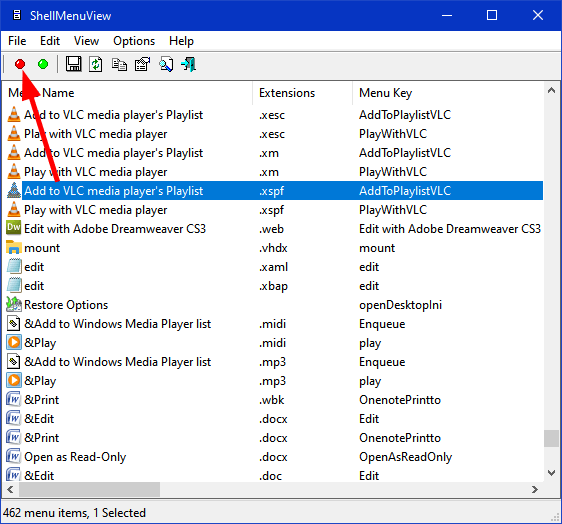 ShellExViewIf you couldn’t get rid of all undesired items in your right-click context menu using ShellMenuView, you should be able to disable them with ShellExView. It’s a very lightweight utility that works with all versions of Windows (32-bit and 64-bit editions). Just launch the program by clicking the shexview.exe and select the items you want to remove or add to the context menu and select Disable or Enable Selected Items. [color=var(--nv-primary-accent)]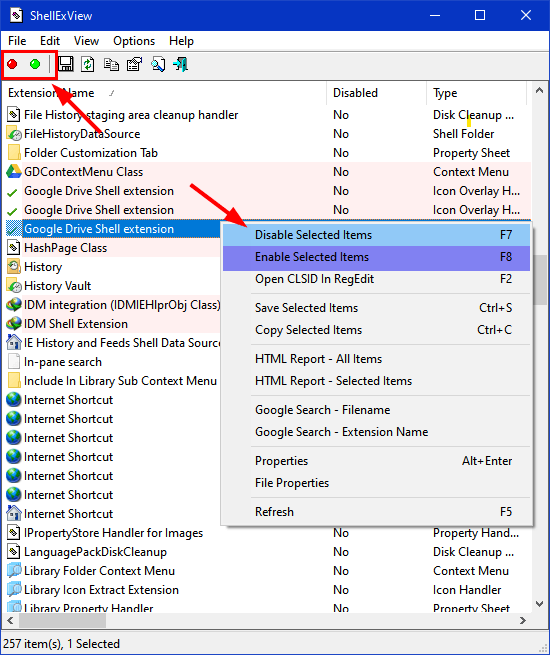 Context Menu TunerContext Menu Tuner is another useful utility that you should check out if you want to customize the context menu on Windows 8,/8.1, and Windows 10. It can add context menu options or commands for files, [color=var(--nv-primary-accent)]Windows File Explorer, folders, desktop, local disk, and library. Download Context Menu Tuner from [color=var(--nv-primary-accent)]Winaero and extract the downloaded cmt.zip. Double-click ContextMenuTuner.exe to launch the tool. - In the right pane, select the destination to which you want to add a context menu item.
- Now navigate through the left pane to find the command you want to add.
- Click on Add >> and select either Add to selected item or Add to specific file type depending on your need.
- Finally, customize the Menu Item Options.
[color=var(--nv-primary-accent)]  [size=0.8em]Context Menu Tuner set up
As you can see in the screenshot, I have added the [color=var(--nv-primary-accent)]Copy file path command for all file types on my PC. Context Menu Tuner is a must-have tool if you want to add a program to the right-click menu on Windows 10. Some More Context Menu CustomizersIf you are not happy with the Windows context menu editors listed above, there are some more tools that you might try. While FileMenu Tools is good enough, Right Click Enhancer is a paid utility that is available for a free trial. As for CCleaner, it’s not a dedicated context menu customizer. However, you can still use it to edit the right-click context menu by navigating to Tools > Startup > Context Menu. Whether you use the Registry Editor or a tool, it’s very easy to edit the context menu on Windows 10, 8, 7, Vista, and XP. Easy Context Menu is my go-to program for making changes to the context menu. Which tool do you prefer? Do let me know via comments.
|  |Archiver|手机版|小黑屋|firemail
( 粤ICP备15085507号-1 )
|Archiver|手机版|小黑屋|firemail
( 粤ICP备15085507号-1 )